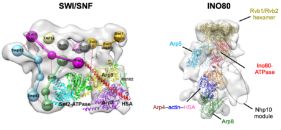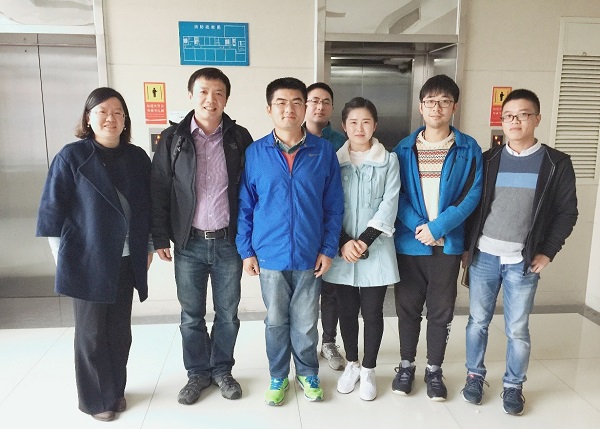Most people are not familiar with the knowledge of Molecular Biology, not to mention SWI/SNF and INO80 chromatin Remodel Complex. Scientists in the field of molecular biology are devoted to exploring the structure of macromolecules such as proteins and genes, figuring out the working principles of those macromolecules that constitute the basic components of life and even trying to change their structure so that they can get new functions.
SWI/SNF chromatin Remodel Complex and INO80 chromatin Remodel Complex are two significant complexes in human’s cell related to gene replication and DNA transcription. Enzymes that catalyze changes in chromatin structure, including histone modifications and chromatin remodeling, usually assemble into multi-subunit complexes to function. Those complexes contains Actin/Arp modules consisting of actin and actin-related proteins (Arps), such as SWI/SNF, INO80, etc. Studies have shown that the effects of chromatin remodeling complexes are associated with a variety of cancers. Unfortunately, the structural information of Arps has been limited to only low-resolution electron microscopy (EM) reconstructions without subunits localization and the lack of SWI/SNF-nucleosome structure.

The structure of SWI/SNF and INO80 Remodel Complex
Recently, Researchers from Hefei National Laboratory for Physical Sciences at Microscale and School of Life Sciences, University of Science and Technology of China(USTC) firstly present the architecture of SWI/SNF chromatin remodeling complex and Structure and Functional Interactions of INO80 Actin/Arp Module. This work was published on the latest edition of Protein & Cell, a famous monthly peer-reviewed open access journal covering protein and cell biology, and Journal of Molecular Cell Biology, a biweekly peer-reviewed scientific journal covering all aspects of molecular and cellular biology.
Researchers in the team determine the improved 3D EM reconstruction of intact SWI/SNF complex and to illuminate the subunit architecture. Firstly, they optimized the affinity purification steps and obtained highly homogeneous samples of SWI/SNF, Then, they delete different subunits once at a time from the complex and comparing the structure of intact SWI/SNF with those missing particular subunits to delineated the modular architecture of SWI/SNF. They locate the subunits and reveal the connections between all of subunits.
Additionally, they present an improved cryo-EM structure of the yeast INO80 complex and the first 3D reconstruction of the INO80 actin/Arp module. The modular and subunit architecture is defined using a combination of subunit deletion analysis and published crosslinking-mass spectrometry (CX-MS). The functional interactions of the INO80 actin/Arp module with a nucleosome is 3D EM reconstructed in two different binding states. Nucleosomes initially bind to the Arp8 subunit and the substantial conformational changes maximize nucleosome contacts of the actin/Arp module. The findings suggest that the conserved nuclear actin/Arp module acts a conformational switch of the INO80 for nucleosome binding.

The research team
The work present the structures of two important chromatin remodeling complex, which is of great significance of understanding the molecular mechanism of gene expression, DNA transcription and cell proliferation. This study may lay the theoretical foundation for the development of new tumor therapeutic drugs, stem cell differentiation and reprogramming.
ZHANG Jianhui and ZHANG Xuan, Ph.D. students at Hefei National Laboratory for Physical Sciences at Microscale and School of Life Sciences of USTC, are the first authors of the two papers. Prof. CAI Gang and WANG Xuejuan are co-authors. The work was funded by the Fund Committee, the Ministry of Science and Technology, and the Hefei National Laboratory for Physical Sciences at the Microscale, and was supported by the Institute of Biophysics of the Chinese Academy of Sciences.
Article link:https://link.springer.com/article/10.1007%2Fs13238-018-0524-9
https://academic.oup.com/jmcb/advance-article-abstract/doi/10.1093/jmcb/mjy062/5156286
(Written by YU Haikuo, edited by YANG Xinqi, USTC News Center)